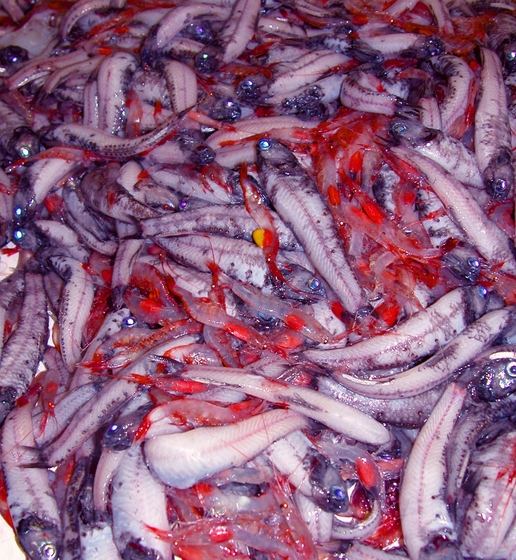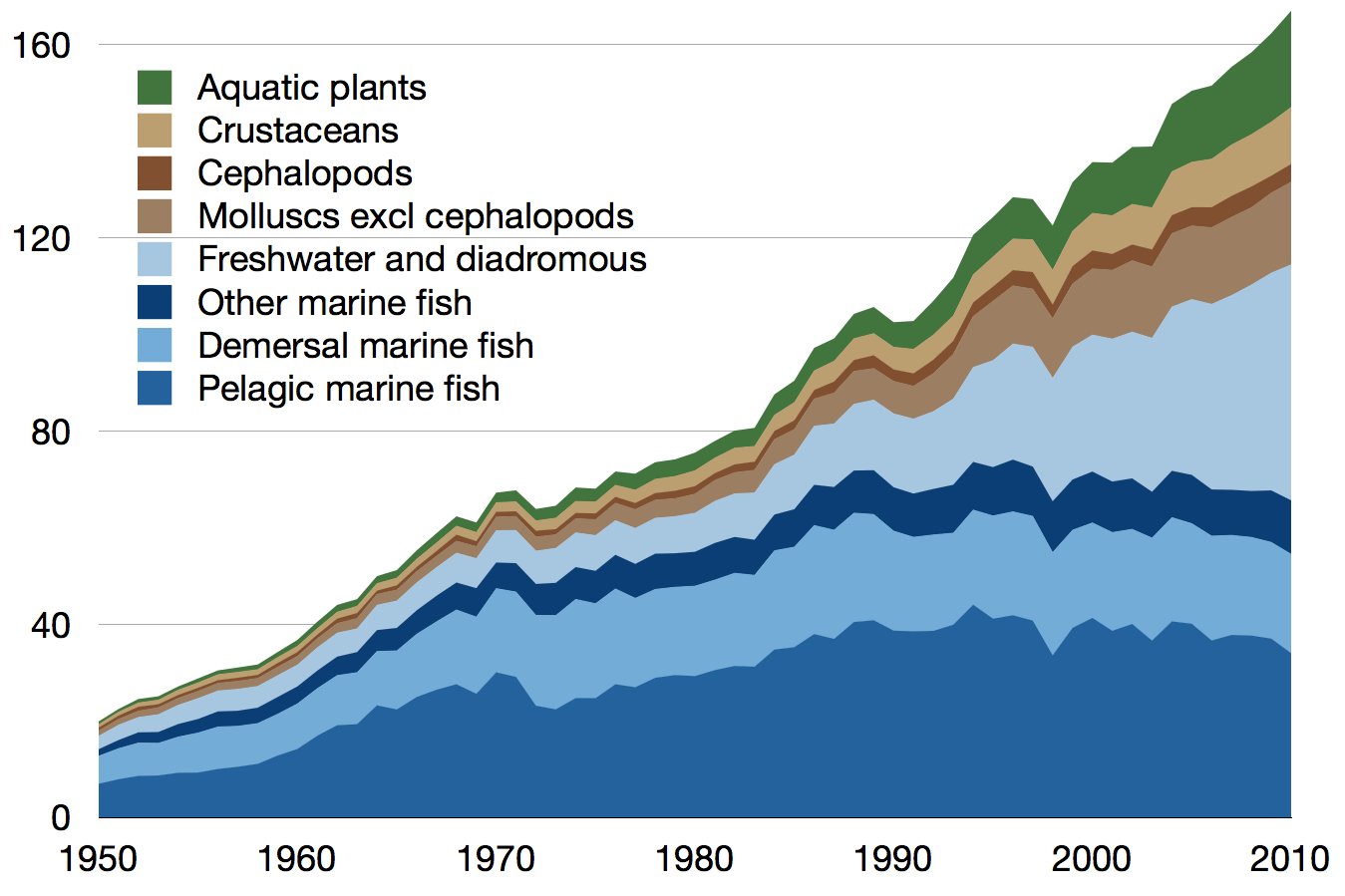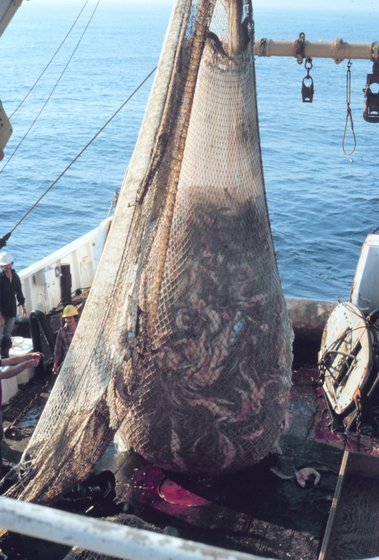Summary
One trillion is roughly the number of wild fish caught per year, according to an excellent study on fishcount.org.uk, which promotes humane slaughter methods in commercial fishing.

The exact range given is 0.97-2.74 trillion. The vastness of this number suggests that fishing is an overlooked issue even by animal advocates. Humane fish slaughter may represent one promising way to alleviate large amounts of fish suffering.
Translations:
- German: .pdf
Numerosity estimate
The "one trillion" figure counts "both marine and freshwater fish that are caught from the wild," but "Marine invertebrates and farmed fish are not included in this estimate." This table is perhaps the most concise summary of the data. The biggest numbers come from small fish, especially anchovies and sardines, but the share from the little guys is not overwhelming.
I was surprised that the figure is so high, because I'm accustomed to numbers on the order of 10 billion for chickens slaughtered in the US per year, or 60 billion globally. Combined with the fact that humane slaughter for fish is often medieval by comparison with that for other food animals, I suspect that promoting less painful killing of fish (both wild-caught and farmed) is one of the most cost-effective ways to help non-invertebrates in the short term.

The fishcount.org.uk study found that 77,388,322 (say 77 million) tons of fish corresponded to 973,971,000,000 to 2,735,579,000,000 (say 1 trillion) individuals. That's about 13,000 individual fish per ton of fish. An unrelated study, "Researcher gives first-ever estimate of worldwide fish biomass and impact on climate change," estimates that the total biomass of all fish in the ocean (not just caught fish) is 0.8 to 2 billion tonnes (say 1 billion). Assuming the fish-weight conversion is the same—which may not be valid if it's harder to catch the tiny fish?—this implies that there are ~13 trillion wild fish in the oceans at any given time.
Carlier and Treich (2020) repeat the kind of calculation I attempted in the previous paragraph using more recent estimates of global fish biomass, yielding a world fish population between 125.3 trillion and 354 trillion. They also cite a different 2018 estimate that the number of fish is ~1000 trillion.
Peter Singer's comments
Peter Singer, "Fish: the forgotten victims on our plate":

There is no humane slaughter requirement for wild fish caught and killed at sea, nor, in most places, for farmed fish. [...]
The most startling revelation in the report, however, is the staggering number of fish on which humans inflict these deaths. By using the reported tonnages of the various species of fish caught, and dividing by the estimated average weight for each species, Alison Mood, the report's author, has put together what may well be the first-ever systematic estimate of the size of the annual global capture of wild fish. It is, she calculates, in the order of one trillion, although it could be as high as 2.7tn.
To put this in perspective, the United Nations Food and Agriculture Organisation estimates that 60 billion animals are killed each year for human consumption—the equivalent of about nine animals for each human being on the planet. If we take Mood's lower estimate of one trillion, the comparable figure for fish is 150.
Humane fish slaughter
One way to mitigate the massive suffering due to fishing is to promote humane fish slaughter. This is a "safe" option in the sense that it doesn't entail messy questions about the net implications of fishing for wild-animal suffering, because roughly the same number of fish are being killed either way.
There seem to be low-hanging fruit in this area. For farmed fish at least, here's an inspiring story from the 2010-2011 Annual Report of the Humane Slaughter Association (p. 4):
In September 1996 the Farm Animal Welfare Council published a report on the welfare of farmed fish. This included the recommendation:
'Para 255. A satisfactory method of slaughtering trout en masse which renders them instantaneously insensible until death supervenes is urgently required. There should be research to develop acceptable methods of humanely killing trout, for example electrical methods....'
Various organisations came together to take up this challenge. Jeff Lines led the necessary research into the electrical currents needed to stun and kill trout humanely and the ways in which this current could be applied for long enough to ensure that there was no recovery. This research was very successful and it wasn't long before a prototype system was being tested.
John Ace-Hopkins worked with Jeff to develop, manufacture and make available systems based on these new scientific findings to the farmed fish community. The result was that within about 10 years from FAWC drawing attention to the need for humane slaughter systems, a system had been developed and was in use. Until 10 years ago there was no way to humanely kill farmed fish en masse—they died slowly through suffocation when harvested from the water, now they are instantaneously stunned whilst still in water.
This is a welfare benefit for millions of fish.
I'm not sure how prevalent electric stunning of this type is, but I think it's making progress in the UK.
Conclusion
Rather than protesting zoos and circuses, these numbers suggest that animal advocates have bigger fish to (not) fry.
